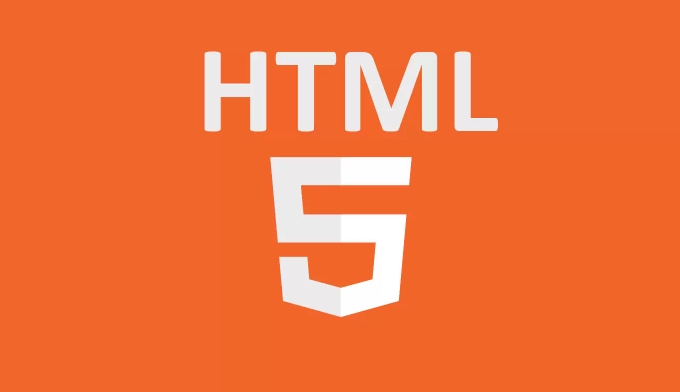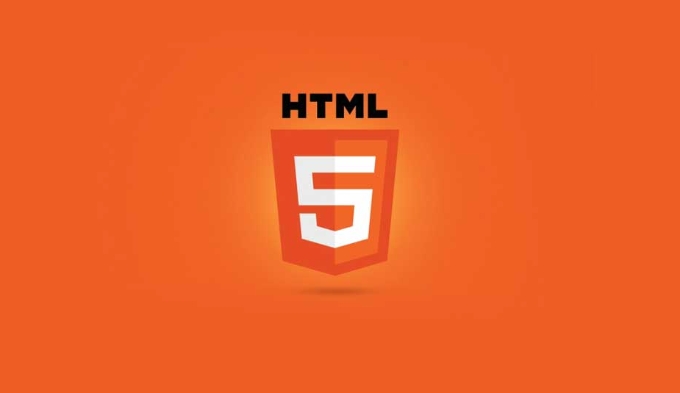Key Technical Differences: HTML vs HTML5
The main differences between HTML5 compared to original HTML are reflected in four aspects: First, the introduction of semantic tags, such as

When people talk about HTML vs HTML5, what they're really asking is: what's different between the original HTML and its updated version, HTML5? The short answer is that HTML5 brings a bunch of new features, cleaner code, and better support for multimedia and mobile — things today's web just wouldn't work without.

1. Structural Tags – More Meaningful Layouts
Older versions of HTML mostly relied on <div> tags with class or id names to structure a page — like <code><div id="header"> or <code><div class="footer"> . That worked, but it wasn't very descriptive.<p> HTML5 introduced <strong>semantic elements</strong> like <code><header></header> , <footer></footer> , <nav></nav> , <article></article> , and <section></section> . These aren't just cosmetic — they help browsers, screen readers, and search engines understand the layout better.

For example:
-
<nav></nav>clearly marks where the navigation menu is. -
<article></article>tells the browser this is a self-contained piece of content.
This makes coding easier and improves accessibility and SEO without extra effort.

2. Native Multimedia Support – No Plugins Needed
In classic HTML, if you wanted to embed audio or video, you had to use third-party plugins like Flash — which was clunky, insecure, and not mobile-friendly.
HTML5 changed the game by introducing native support through:
-
<audio></audio>tag for sound files -
<video></video>tag for videos
You can now do something like:
<video src="movie.mp4" controls></video>
And the browser handles playback without needing extra software. This was a big deal when mobile browser took off since most mobile devices never supported Flash.
3. Better Form Handling and Input Types
Forms in older HTML were pretty basic. You had <input type="text"> , <input type="password"> , and maybe a few others. If you wanted date pickers, email validation, or numeric inputs, you needed JavaScript or external libraries.
HTML5 added new input types like:
-
<input type="email"> -
<input type="date"> -
<input type="number"> -
<input type="range">(slider) -
<input type="color">
These make forms smarter. For example:
- Using
type="email"on a mobile device will bring up an email-optimized keyboard. - Browsers can validate fields automatically without custom scripts.
Also, HTML5 introduced attributes like placeholder , required , and autofocus , making forms more user-friendly out of the box.
4. Improved Error Handling and Doctype
HTML used to be pretty forgiving, sometimes too much. Different browsers could interpret broken code differently, leading to inconsistent layouts.
HTML5 doesn't fix all rendering quirks, but it simplified the doctype declaration , which tells the browser how to render the page. In old HTML, it looked like this:
<!DOCTYPE html PUBLIC "-//W3C//DTD XHTML 1.0 Transitional//EN" "http://www.w3.org/TR/xhtml1/DTD/xhtml1-transitional.dtd">
In HTML5, it's much simpler:
<!DOCTYPE html>
That one line tells the browser to render in standards mode — no confusion, no long URLs. It also improved parsing rules so browsers handle bad code more consistently.
Final Thoughts
So, what's the real difference between HTML and HTML5? It's not just a name change — HTML5 modernized the language to match how we use the web today. With semantic tags, native media support, smarter forms, and cleaner syntax, it made development faster and websites more capable.
It's not complicated once you start using it, but those small differences add up in a big way.
The above is the detailed content of Key Technical Differences: HTML vs HTML5. For more information, please follow other related articles on the PHP Chinese website!

Hot AI Tools

Undress AI Tool
Undress images for free

Undresser.AI Undress
AI-powered app for creating realistic nude photos

AI Clothes Remover
Online AI tool for removing clothes from photos.

Clothoff.io
AI clothes remover

Video Face Swap
Swap faces in any video effortlessly with our completely free AI face swap tool!

Hot Article

Hot Tools

Notepad++7.3.1
Easy-to-use and free code editor

SublimeText3 Chinese version
Chinese version, very easy to use

Zend Studio 13.0.1
Powerful PHP integrated development environment

Dreamweaver CS6
Visual web development tools

SublimeText3 Mac version
God-level code editing software (SublimeText3)

Hot Topics
 Commenting Out Code in PHP
Jul 18, 2025 am 04:57 AM
Commenting Out Code in PHP
Jul 18, 2025 am 04:57 AM
There are three common methods for PHP comment code: 1. Use // or # to block one line of code, and it is recommended to use //; 2. Use /.../ to wrap code blocks with multiple lines, which cannot be nested but can be crossed; 3. Combination skills comments such as using /if(){}/ to control logic blocks, or to improve efficiency with editor shortcut keys, you should pay attention to closing symbols and avoid nesting when using them.
 Quick PHP Installation Tutorial
Jul 18, 2025 am 04:52 AM
Quick PHP Installation Tutorial
Jul 18, 2025 am 04:52 AM
ToinstallPHPquickly,useXAMPPonWindowsorHomebrewonmacOS.1.OnWindows,downloadandinstallXAMPP,selectcomponents,startApache,andplacefilesinhtdocs.2.Alternatively,manuallyinstallPHPfromphp.netandsetupaserverlikeApache.3.OnmacOS,installHomebrew,thenrun'bre
 Improving Readability with Comments
Jul 18, 2025 am 04:46 AM
Improving Readability with Comments
Jul 18, 2025 am 04:46 AM
The key to writing good comments is to explain "why" rather than just "what was done" to improve the readability of the code. 1. Comments should explain logical reasons, such as considerations behind value selection or processing; 2. Use paragraph annotations for complex logic to summarize the overall idea of functions or algorithms; 3. Regularly maintain comments to ensure consistency with the code, avoid misleading, and delete outdated content if necessary; 4. Synchronously check comments when reviewing the code, and record public logic through documents to reduce the burden of code comments.
 Tips for Writing PHP Comments
Jul 18, 2025 am 04:51 AM
Tips for Writing PHP Comments
Jul 18, 2025 am 04:51 AM
The key to writing PHP comments is to clarify the purpose and specifications. Comments should explain "why" rather than "what was done", avoiding redundancy or too simplicity. 1. Use a unified format, such as docblock (/*/) for class and method descriptions to improve readability and tool compatibility; 2. Emphasize the reasons behind the logic, such as why JS jumps need to be output manually; 3. Add an overview description before complex code, describe the process in steps, and help understand the overall idea; 4. Use TODO and FIXME rationally to mark to-do items and problems to facilitate subsequent tracking and collaboration. Good annotations can reduce communication costs and improve code maintenance efficiency.
 Learning PHP: A Beginner's Guide
Jul 18, 2025 am 04:54 AM
Learning PHP: A Beginner's Guide
Jul 18, 2025 am 04:54 AM
TolearnPHPeffectively,startbysettingupalocalserverenvironmentusingtoolslikeXAMPPandacodeeditorlikeVSCode.1)InstallXAMPPforApache,MySQL,andPHP.2)Useacodeeditorforsyntaxsupport.3)TestyoursetupwithasimplePHPfile.Next,learnPHPbasicsincludingvariables,ech
 Writing Effective PHP Comments
Jul 18, 2025 am 04:44 AM
Writing Effective PHP Comments
Jul 18, 2025 am 04:44 AM
Comments cannot be careless because they want to explain the reasons for the existence of the code rather than the functions, such as compatibility with old interfaces or third-party restrictions, otherwise people who read the code can only rely on guessing. The areas that must be commented include complex conditional judgments, special error handling logic, and temporary bypass restrictions. A more practical way to write comments is to select single-line comments or block comments based on the scene. Use document block comments to explain parameters and return values at the beginning of functions, classes, and files, and keep comments updated. For complex logic, you can add a line to the previous one to summarize the overall intention. At the same time, do not use comments to seal code, but use version control tools.
 PHP Development Environment Setup
Jul 18, 2025 am 04:55 AM
PHP Development Environment Setup
Jul 18, 2025 am 04:55 AM
The first step is to select the integrated environment package XAMPP or MAMP to build a local server; the second step is to select the appropriate PHP version according to the project needs and configure multiple version switching; the third step is to select VSCode or PhpStorm as the editor and debug with Xdebug; in addition, you need to install Composer, PHP_CodeSniffer, PHPUnit and other tools to assist in development.
 PHP Constants: Const vs. Define
Jul 18, 2025 am 04:56 AM
PHP Constants: Const vs. Define
Jul 18, 2025 am 04:56 AM
Defining constants in PHP, const is more suitable for constant definitions inside classes, and define() is more flexible and suitable for global or dynamic definitions. 1.const is a language structure, and must be a compile-time constant expression when defined, which is suitable for class or global namespaces; define() is a function, and the value can be the result of runtime calculation. 2.const is affected by the namespace, and the constants defined by define() are visible globally by default. 3. The const structure is clear and the IDE is good, which is suitable for object-oriented design; define() has high flexibility but may have higher maintenance costs. 4. define() supports runtime condition judgment and dynamic definition, but const does not support it. Therefore, class-related constants preferentially use co







